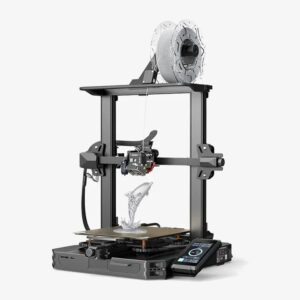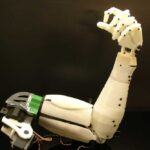The main 3D prototyping services
Depending on what the goal is for a prototype, some prototypes may be better than others to fulfill the goals. TJT Engineering has several prototyping services available to assist with fit and function, design and force type prototypes. 3D printing may be a suitable prototyping method for fit and function, design, and low force prototypes. Higher forces or alternative functions may require using machined parts in either a hybrid or completely machined parts assemblies.

3D printing
Types of 3D printing (plastic)
There are a few methods of producing plastic 3D prints: Stereolithography (SLA), Fused Deposition Modeling (FDM), and Selective laser sintering (SLS). The most popular method is FDM because it is easy to work with and produces relatively cheap parts and is the prototyping service we offer unless it won’t work for the customer need.
Power Tip #1: Choose the simplest and cheapest part that fulfills the mission of your prototype: TJT Engineering can help you decide.
Materials
There are several types of plastic filament available for 3D printing.
PLA filament is a bioplastic, made from renewable natural resources such as cornstarch and tapioca products. This also makes it completely biodegradable. Nylon offers low friction which means greater movement. It is a preferred material for making parts that require free movement.
Nylon is a synthetic copolymer, typically made of polyamides, and is more flexible, more durable, and tougher than PLA. Nylon is a hygroscopic material, which means it will absorb moisture from the air. This creates a bit of a challenge to making good 3D prints.
ABS (acrylonitrile butadiene styrene) is known for its exceptional mechanical properties. ABS offers a good balance of impact, heat, chemical and abrasion resistance, dimensional stability, tensile strength, surface hardness, rigidity and electrical characteristics.
PETG has physical properties similar to ABS but prints much easier with very little warping. PETG has very good layer-to-layer adhesion during prints, which makes for high strength, stiff parts. PETG Filament is naturally transparent, and printed parts have a smooth, glossy finish.
TPU (Thermoplastic Polyurethane) is a popular flexible material for 3D printing. The resulting parts are pliable but tough. Because it is so flexible, parts such as a collapsible bowl are possible.
Power Tip #2: Select PLA filament unless part specifications prevent it: TJT Engineering can help you decide which material will work for your application.
Hybrid 3D prototype and machined parts
Another method of producing high quality prototypes is to use a combination of 3D printed parts and machined parts. This can increase the force the prototype can withstand while still allowing complicated pieces to be printed quickly. Keeping the machining requirements to simple processes will speed the prototype building process. One example of this is to use 3D printed parts with common hardware.

Machined parts
Frequently asked questions
We are located near Minneapolis Minnesota but we are able to ship prototypes nearly anywhere. The advantage of being near Minneapolis is our in-person access to a relatively large market.
Not only do we offer prototyping services, we also offer design engineering. We can help you turn your concept into a workable design. After the design is finalized, we can help you scale up your production. Here is a link to a detailed page of prototyping services TJT Engineering Offers: Services
We offer 3D prototyping in a variety of materials. We can help with the engineering of the part prior to prototyping also so you get the best possible result.
We are experienced in helping write patent applications and “reducing to practice,” the critical piece of product development that you must satisfy to get a patent granted.
How prototyping services tie into product development
Prototyping can help in the product development cycle in a number of ways. The design can more easily be verified by looking at a physical object compared to the the difficulty in looking at a computer image and getting a sense of the final product. A functional prototype can help verify functions before committing to a production with non-functional parts. Gaining valuable feedback from users can help you “tune in” your design before going to production also.
Power Tip #3: Your prototype should fulfill multiple missions, such as both function verification and customer acceptance. TJT Engineering can help design a prototype plan to maximize your use of the prototype.
references